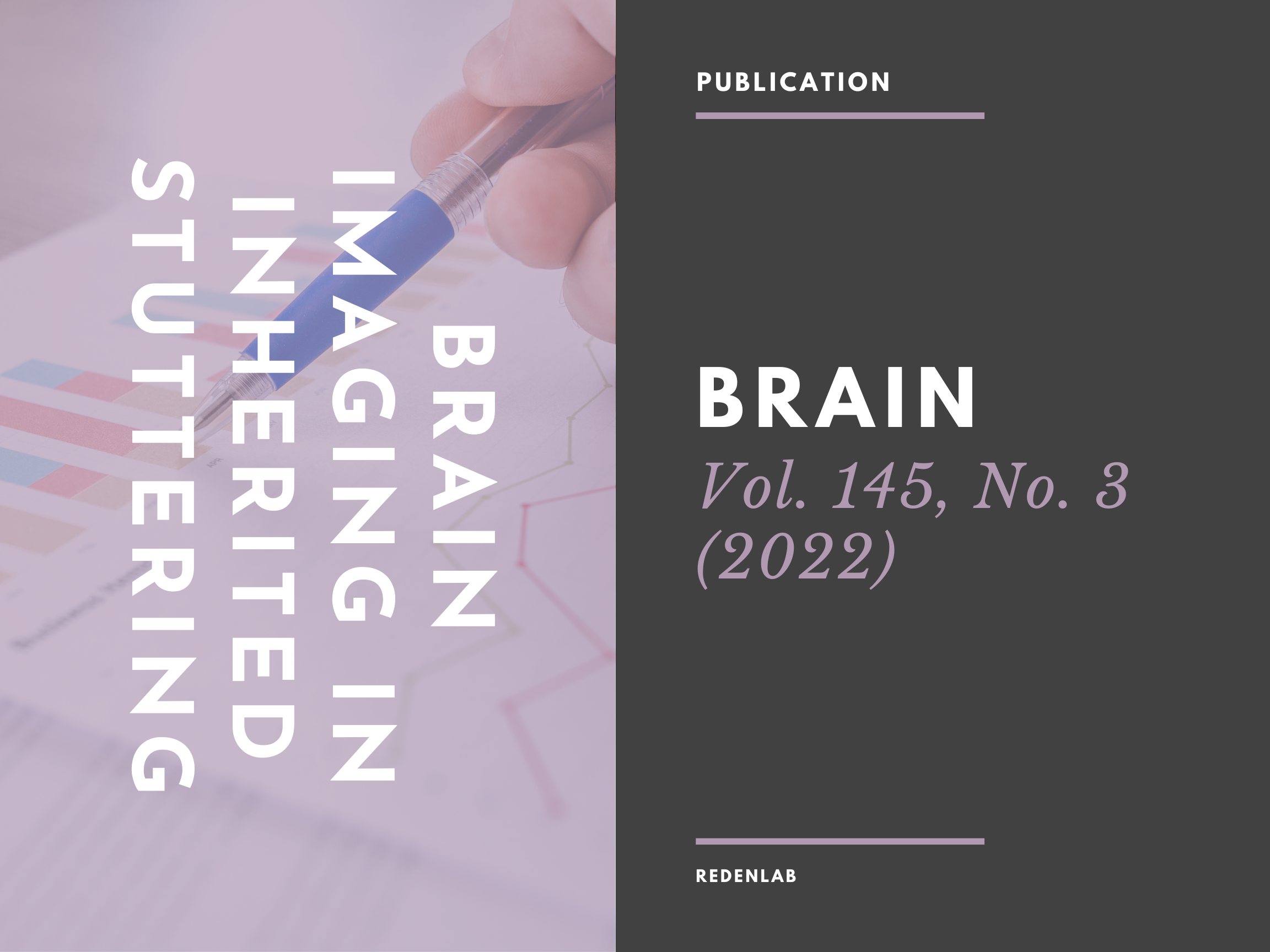Brain imaging in inherited stuttering

Atypical development of Broca’s area in a large family with inherited stuttering
Stuttering (aka Stammering) is a neuro-motor disorder of speech impacting communication. Developmental stuttering is a condition of speech dysfluency, characterised by pauses, blocks, prolongations, and sound or syllable repetitions. It affects around 1% of the population, with potential detrimental effects on mental health and long-term employment. Accumulating evidence points to a genetic aetiology, yet gene-brain associations remain poorly understood due to a lack of MRI studies in affected families. Here we report the first neuroimaging study of developmental stuttering in a family with autosomal dominant inheritance of persistent stuttering.
The team from Murdoch Childrens Research Institute, The University of Melbourne and University College London studied a four-generation family, sixteen family members were included in genotyping analysis. T1-weighted and diffusion weighted MRI scans were conducted on seven family members (6 male; aged 9–63 years) with two age and sex matched controls without stuttering (N = 14). Using Freesurfer, we analysed cortical morphology (cortical thickness, surface area and local gyrification index) and basal ganglia volumes. White matter integrity in key speech and language tracts (i.e. frontal aslant tract and arcuate fasciculus) was also analysed using MRtrix and probabilistic tractography.
The team identified a significant age by group interaction effect for cortical thickness in the left hemisphere pars opercularis (Broca’s area). In affected family members this region failed to follow the typical trajectory of age-related thinning observed in controls. Surface area analysis revealed the middle frontal gyrus region was reduced bilaterally in the family (all cortical morphometry significance levels set at a vertex-wise threshold of p < 0.01, corrected for multiple comparisons). Both the left and right globus pallidus were larger in the family than in the control group (left p = 0.017; right p=0.037), and a larger right globus pallidus was associated with more severe stuttering (rho =0.86, p=0.01). No white matter differences were identified. Genotyping identified novel loci on chromosomes 1 and 4 that map with the stuttering phenotype.
Findings denote disruption within the cortico-basal ganglia-thalamo-cortical network. The lack of typical development of these structures reflects the anatomical basis of the abnormal inhibitory control network between Broca’s area and the striatum underpinning stuttering in these individuals. This is the first evidence of a neural phenotype in a family with an autosomal dominantly inherited stuttering.
Redenlab pediatric consultant Professor Angela Morgan was lead researcher on the study.
To find out more about this study, click here.
